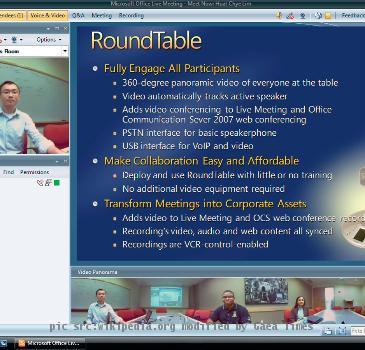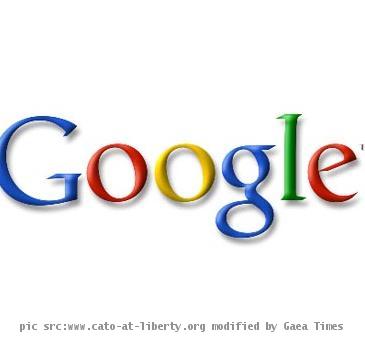Review: How the iPad won over a skeptic; Why you shouldn’t hold your breath for rival tablets
By Peter Svensson, APWednesday, September 15, 2010
Review: How the iPad won over a skeptic
NEW YORK — At first glance, the iPad looked like a heavy, overgrown iPod Touch. After just a few months of use, however, this iPad skeptic realized that it’s so much more — it’s one of those devices I’ve always needed. Those don’t come around very often.
Most things get less interesting the more examples you see of them. If you’ve never seen a computer before, the first one is a revelation, but each successive model gets less and less remarkable.
Apple Inc.’s iPad is the other way around. It looks more impressive in light of what’s come before it. I’ve seen many tablet computers of different stripes since 2002, when Microsoft introduced Windows XP Tablet Edition. The quality has varied, but they’ve all been failures, even the recent ones. They’re a Stonehenge’s worth of near-useless slabs.
The iPad finally fulfills the promise of the tablet computer when it came out in April.
It cuts the mouse and keyboard out of the equation, giving us a straight, tactile connection. While the iPad builds on the iPhone, it feels like a bigger achievement. The first iPhone was a great phone, driven by far-thinking new ideas. But other people had made good phones before. Before the iPad, no one had made a good tablet computer. Even Apple failed with its first attempt, the Newton, back in the 90s.
When I first got my hands on an iPad for a review, I played games on it for about a month. My favorite strategy game, “Battle for Wesnoth,” was written for the PC, but actually works better on the iPad, thanks to the immediacy of the touch interface. Several other games conspired to suck away my productivity, so it took me a while to realize that the iPad actually fulfills a long-time tablet vision as well: It’s like a sheet of paper, electronified. That’s what made me plunk down $499 for one of my own once I was done with the borrowed review unit.
I knew I was waiting for a device that could replace printouts, magazines, newspapers and books in my life. At first, I didn’t think the iPad was it, because it’s too heavy to hold comfortably in one hand. In particular, I need one hand free to steady myself on the New York subway. Better, I thought, to wait for a smaller device, something with a screen that measures 5 to 7 inches diagonally instead of the iPad’s 9.7 inches.
I was wrong. The iPad isn’t too heavy if I support it on a bag when standing. And the screen is just big and sharp enough to display decently a letter-sized document or a reformatted newspaper page with teasers for a couple of articles.
That means the last defenses that kept dead trees relevant to me have been overcome. I canceled the print subscription for one of my newspapers and went electronic. I’ve also started stuffing papers I want to have with me through a sheet-fed scanner and moved the resulting files to the iPad as PDFs. It’s like ripping CDs to get MP3s; the iPad is like an iPod for paper.
Replacing paper was the rationale of Amazon.com Inc.’s Kindle e-reader, but the multi-purpose iPad beats it at its own game. The Kindle was revolutionary in its way because it could download books wirelessly, but it has been held back by a screen technology that’s slow to react to our commands. It can display static page after static page, but scrolling and zooming don’t really work, so PDF viewing is impractical.
Amazon launched a new TV spot this week, showing a man struggling to read an iPad poolside in bright sunlight, while a bikini-clad woman next to him is reading a Kindle comfortably. It’s true that Kindles are more readable than iPads in bright light. What the ad doesn’t mention is that that’s the only situation in which you’ll be happier with a Kindle. By all means, if you spend your days at the pool or beach, get a $139 Kindle and spend the $360 you’ll be saving over the iPad on a lot of sunscreen.
Other reviewers have spread confusion about the selection of books available on the iPad. It’s true that Apple’s own iBook store has fewer books than Kindle store. That doesn’t matter, though: You can buy and read Kindle books on the iPad, along with books from a lot of other retailers, including Barnes & Noble Inc.
What about other competing devices? A lot of manufacturers want a piece of the tablet action, and we’ll see quite a few options in stores this holiday season. For instance, Samsung Electronics Inc. has shown off a 7-inch tablet called the Galaxy Tab, and according to The Wall Street Journal, U.S. wireless carriers will sell it subsidized with two-year data service contracts.
From a hardware standpoint, these could be compelling options (though a 7-inch screen is now too small for my taste). Samsung and others can take advantage of the same technological advances that helped Apple improve over previous tablets. They could also remedy some of the annoying omissions of the iPad, such as the lack of built-in USB and memory card ports. They’ll have built-in cameras, too.
The crux, though, is the software. Competitors are relying on Android, a free software package from Google Inc. that’s done well in smart phones. It’s not intended for tablets, though, and Google doesn’t promote it as such. Apple managed to move the iPhone’s software to the iPad without much trouble, but that transition looks more difficult for Android. It just isn’t as slick to begin with. That said, Android has some compelling advantages, including PC-like access to stored files and the ability to run Flash on Web pages.
Next year, we may see better software alternatives. Google has another software package called Chrome OS in the works. It’s designed for netbooks coming out later this year, and could be used for tablets as well. But it’s heavily Web-oriented, and may not provide a lot of functions when used without an Internet connection. Hewlett-Packard Co. recently bought Palm Inc. and plans to use its excellent webOS smart phone software for a tablet, probably next year.
It took competitors a couple of years to start catching up to the iPhone in a serious way. The gap will probably be shorter for tablet computers, but by getting the iPad right on its first try, Apple has real head start. Maybe I’m trying to justify my purchase here, but I have a strong feeling there isn’t a lot to be gained by waiting for the others to catch up.
Need help with a technology question? Ask us at gadgetgurus(at)ap.org.
Tags: Communication Technology, Computing And Information Technology, Consumer Electronics, E-book Readers, Mobile Communications, New York, North America, Print Media, Software, Tablet Computers, United States

